Fibers are the fundamental elements that shape the world of textiles and fashion. They form the very essence of the fabrics we drape ourselves in, from the cozy warmth of wool to the breathability of cotton and the sleek resilience of synthetic wonders like polyester and nylon.
These fibers, sourced from nature or created in labs, possess distinctive attributes that influence the aesthetics, texture, and functionality of the clothing we wear.
In this article, we embark on a journey through the diverse landscape of fibers, exploring their unique characteristics and the roles they play in the creation of apparel that suits our varied needs and styles.
1. Synthetic Fiber
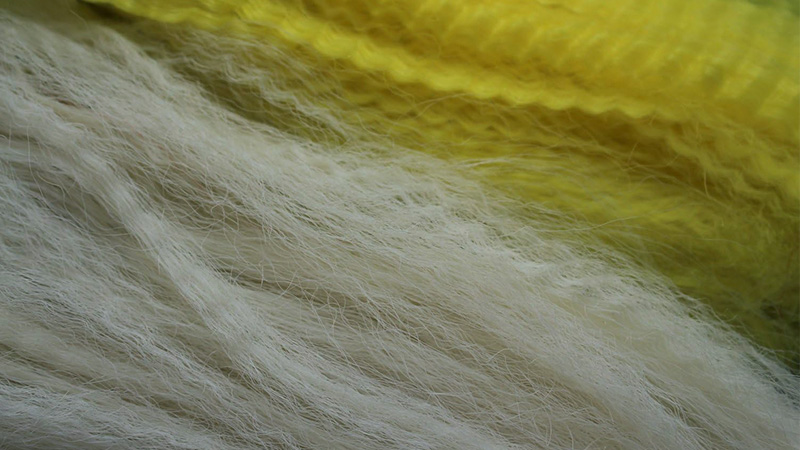
Synthetic fibers, also known as synthetic fibers are materials created through chemical synthesis that are designed to mimic the properties of natural fibers.
Synthetic fibers are not naturally occurring, unlike natural fibers which are derived from living organisms such as animals and plants. Synthetic fibers are the product of extensive research by scientists to create fibers that replicate the qualities of natural fibers.
Synthetic fibers are created by breaking down molecules and then recombining them in a specific way to create a fiber with the desired properties.
Synthetic fibers have many benefits, such as increased strength and flexibility, resistance to heat, water and chemicals, and a lower cost than natural fibers.
Synthetic fibers are used in a wide range of products, from clothing to carpets to industrial materials.
Synthetic fibers have become a vital part of modern life, and their popularity is only increasing as new technologies are developed to make them even more versatile and useful.
2. Cotton
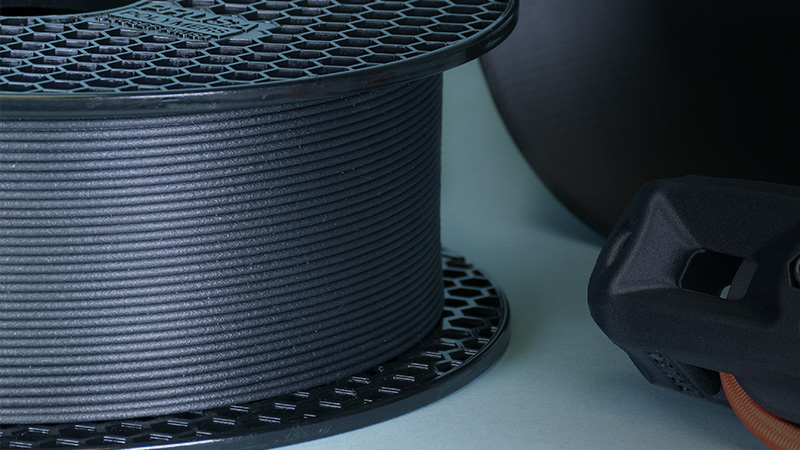
Cotton is a natural fiber that is popularly used in the textile industry. It comes from the fluffy white fibers that grow on the seeds of the cotton plant, which is part of the genus Gossypium and the mallow family Malvaceae.
Cotton is almost entirely composed of cellulose, which is a type of polysaccharide that gives it its softness and strength. Additionally, small amounts of waxes, fats, pectins, and water are also present in the fiber.
These elements help make the cotton more durable and resilient in different types of environments and climates. Cotton is a versatile material that can be used to make a variety of products, such as clothing, bedding, upholstery, and towels.
It is also used in the paper industry to make paper products, such as books and writing paper. Cotton is a renewable resource, making it a sustainable choice for many industries.
3. Rayon
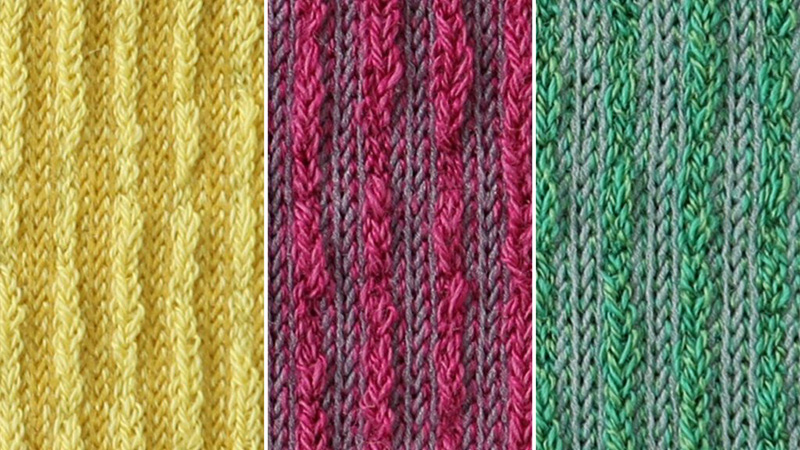
Rayon is a semi-synthetic fiber, made from natural sources of regenerated cellulose. It is also known by other names such as viscose, sabra silk, and cactus silk.
The molecular structure of rayon is the same as cellulose, which is derived from wood and other green plants.
It is a regenerated cellulose fiber which is derived from natural sources, such as wood and other agricultural products. The process of making rayon involves breaking down the cellulose into tiny fibers, which are then spun into a yarn.
This yarn can be woven or knitted into fabrics. It is a highly versatile material, as it can be used to create a variety of garments including shirts, blouses, and skirts. Rayon is popular due to its soft feel and luxurious appearance.
It is also lightweight and breathable, making it a great choice for summer clothing. It also has a low price point compared to other fabrics, making it a cost-effective option.
Additionally, rayon is not affected by sunlight, making it a great choice for outdoor apparel. Overall, rayon is a semi-synthetic fiber made from natural sources of regenerated cellulose.
It has the same molecular structure as cellulose, making it a versatile and cost-effective option for a variety of garments. It is lightweight, breathable, and resistant to sunlight, making it a great choice for outdoor clothing.
4. Polyester
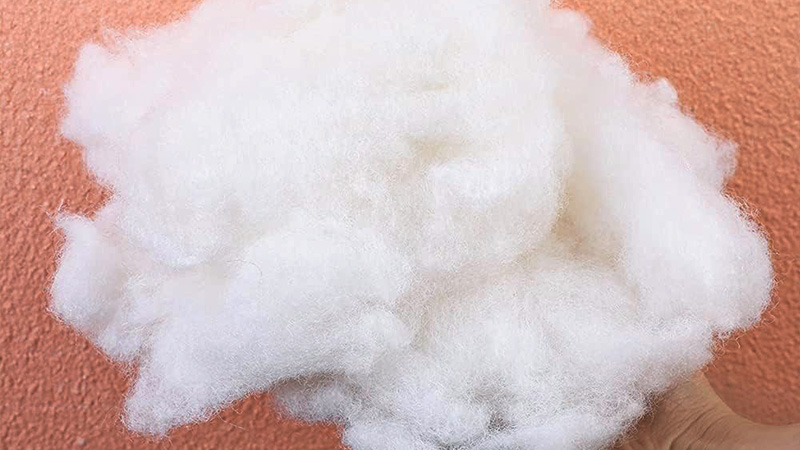
Polyester is a type of synthetic polymer, which is a large molecule made up of repeating structural units. It is a man-made material that can be made to have a variety of characteristics.
Polyester is made up of the ester functional group, which is a type of organic compound.
This functional group is found in every repeat unit of the polyester’s main chain and is made up of a carboxylic acid and an alcohol. Polyethylene terephthalate (PET) is the most common type of polyester.
It is used to make fabrics, fibers, and plastic bottles.
PET has excellent strength and flexibility, as well as being resistant to moisture, chemicals, and stains. It is also flame-retardant and can be dyed easily.
PET is often used to make fabrics for clothing and upholstery, as well as for industrial applications.It is also used to make plastic bottles for water, soda, and other beverages.
5. Nylon
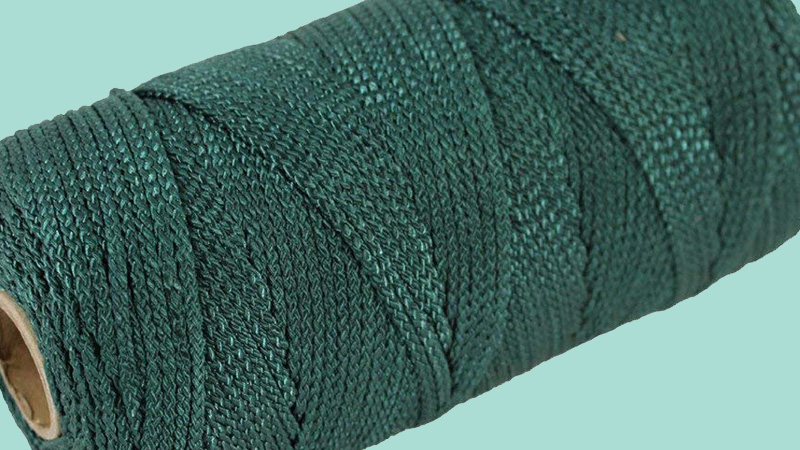
Nylon is a type of polymer, which is a large organic molecule made up of smaller molecules that are linked together in a repeating pattern. Nylons are a family of polymers with an amide backbone, meaning that two organic molecules are joined together by a carbon-nitrogen bond.
These two molecules usually consist of aliphatic or semi-aromatic groups, which are both composed of carbon and hydrogen atoms. Nylons are typically white or colorless, and have a soft texture that is often likened to silk.
They are thermoplastic, which means that they can be softened and shaped when heated, and then hardened when cooled. This process is called “melt-processing”, and it allows nylon to be shaped into fibers, films, and various shapes.
This versatility makes nylon an ideal material for a multitude of uses, including clothing, furniture, and automotive parts.
6. Jute
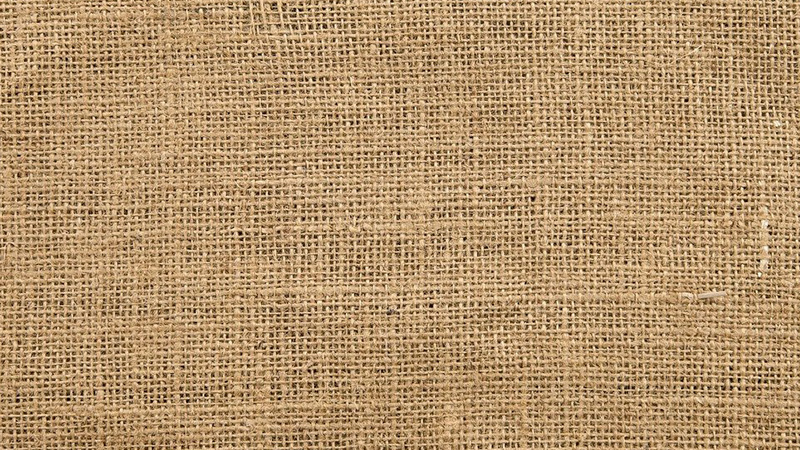
Jute is a natural fiber that is obtained from the stem and ribbon-like outer skin of the jute plant, which is botanically known as Corchorus olitorius.
It is a member of the Tiliaceae family, which also includes other flowering plants like mallow.
It has a long, rough, and shiny structure, and can be spun into coarse, strong threads that are used in various applications. Jute fibers are among the strongest of all natural fibers and are primarily used to make burlap, hessian and jute fabrics.
These fabrics are used in making carpets, rugs, curtains, bags, and mats. Jute is also used as a backing material for floor coverings and as a filler and binder in the manufacture of paper and cardboard.
It is also used in the insulation of cables and other electrical equipments and is also used in the manufacture of twines and ropes. In addition, jute is used in making decorative items, wall hangings, and in the making of insulation for building purposes.
7. Wool
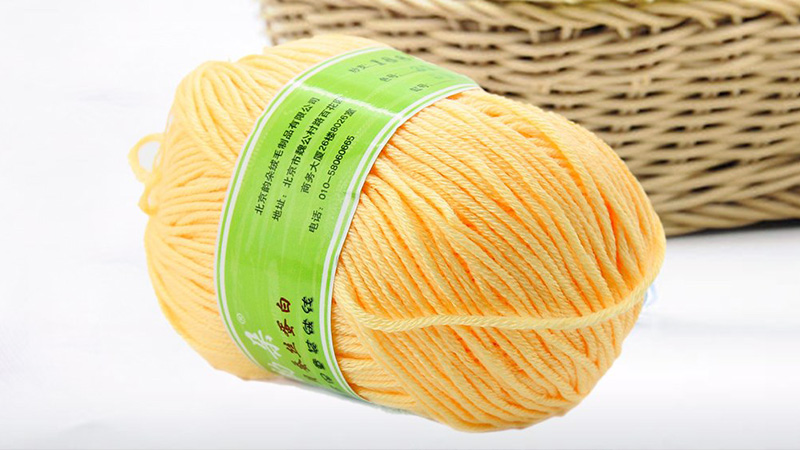
Wool is a versatile natural fibre that is obtained from animals such as sheep, goats, rabbits, and camelids. It has a wide range of uses, from clothing and bedding to insulation and crafts.
Wool is known for its warmth, breathability, durability, and water-resistance.
Additionally, wool is a renewable resource and is biodegradable. In addition to natural wool, there are also inorganic materials with similar properties.
These materials are known as mineral wool and glass wool.
Mineral wool is made from melted rock, such as basalt and diabase, and is used for insulation and soundproofing. Glass wool is made from melted sand and is often used for insulation, fireproofing, and as a filter material.
Both natural wool and inorganic materials offer unique benefits and are commonly used in a variety of applications. While natural wool is often preferred for its softness and comfort, inorganic materials can provide superior insulation and soundproofing capabilities.
8. Silk
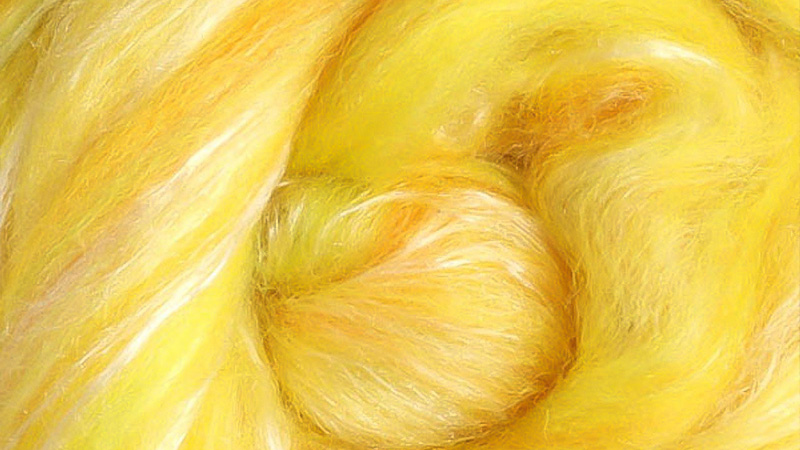
Silk is a natural fiber derived from the protein found in insects. It is made up of fibroin and is produced by certain larvae in the form of cocoons.
The most popular and well-known type of silk is the mulberry silkworm, Bombyx mori, which is specifically reared in captivity to create the cocoons. The larvae create the cocoons by spinning the fibroin together to form a protective casing.
The cocoons are then harvested and the silk yarn is extracted from them. Silk is widely used in the fashion industry, particularly for its luxurious and glamorous look.
It is also commonly used in home decor for its soft texture, which is often seen in bedding and curtains.
Silk is also a popular choice for upholstery, as it is both durable and beautiful. Silk is also used in medical and industrial applications, such as sutures and airbags.
As silk is a natural fiber, it is biodegradable, making it a more sustainable choice than synthetic fibers.
It is also incredibly soft and lightweight, which makes it ideal for clothing. In summary, silk is an incredibly versatile and beautiful natural fiber, with a wide range of uses from fashion to medical applications.
9. Hemp
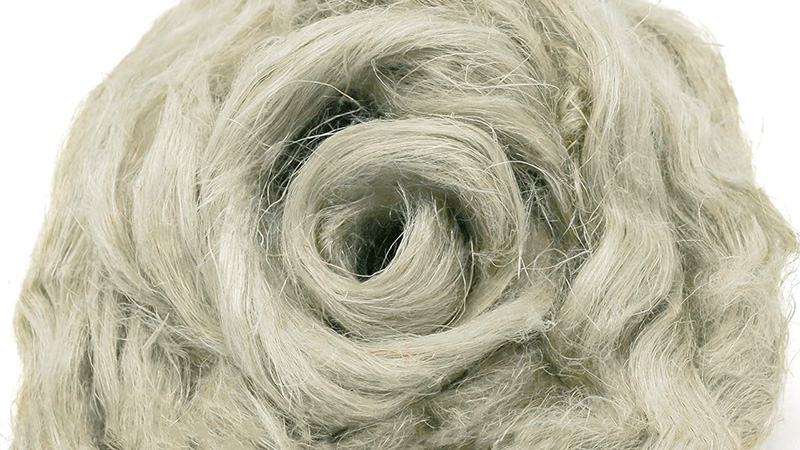
Hemp is a type of Cannabis sativa that has been cultivated specifically for industrial and medicinal use. It has a wide range of applications, including rope, clothing, paper, construction materials, and even food products.
Hemp is an incredibly versatile plant, as it can be grown in a variety of climates around the world. Furthermore, hemp is one of the fastest-growing plants on the planet, rivaled only by bamboo in terms of its rate of growth.
The plant’s fast growth rate, coupled with its ability to thrive in a variety of climates, makes it an ideal crop for commercial production. Hemp is also known for its durability and strength, making it a popular choice for products that require long-term use.
In addition to its industrial uses, hemp has also been used for medicinal purposes for centuries, and recent research has identified potential therapeutic benefits for a range of conditions.
10. Flax
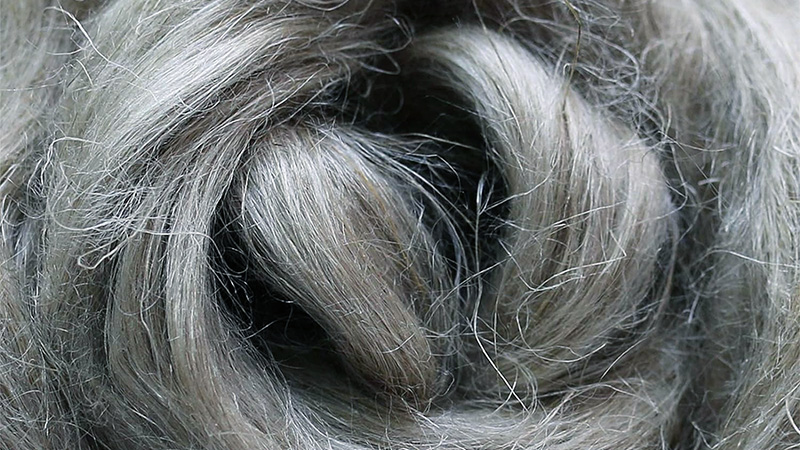
Flax is a flowering plant from the family Linaceae, and it is known by two other names: common flax and linseed. Flax is cultivated all around the world in temperate climates, for both its food and fiber.
The plant is characterized by its small, blue flowers which produce a seed which is used for fiber and oil. The fiber is commonly used for creating fabrics, while the oil is used for both culinary and medicinal purposes.
The oil is also used for industrial purposes, such as making paints, varnishes, and soaps. Flax is highly beneficial to the environment, as it helps to reduce soil erosion, increase soil fertility, and provide habitats for beneficial insects.
In addition, it is a great source of nutrition, as it is rich in omega-3 fatty acids, dietary fiber, and other essential nutrients. Kingdom Plantae Clade Rosids Order Malpighiales Family Linaceae Genus Linum Species L. usitatissimum.
11. Ramie
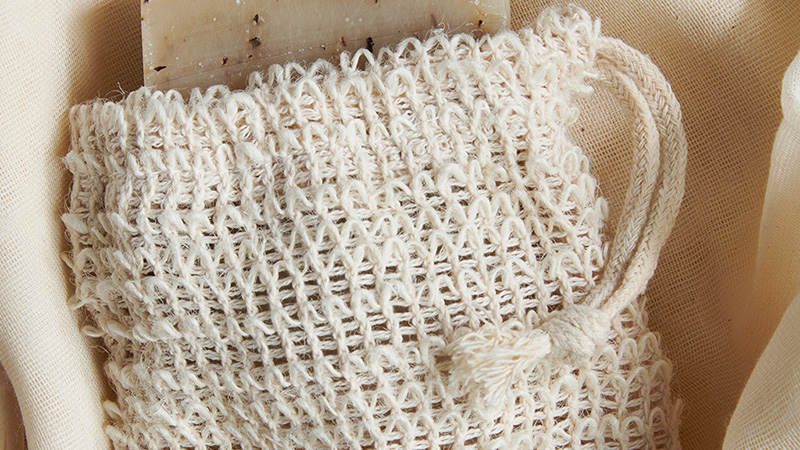
Ramie is a plant species belonging to the Urticaceae family, native to eastern Asia. It is also known as Boehmeria nivea and is known for its highly fibrous nature, making it a popular material for fabric production.
The stems of the plant are used to produce the fabric which is very strong and durable, making it a popular choice for various garments including tablecloths, draperies, upholstery, and bedding.
Ramie can also be used to make paper and cordage, and is known for its ability to resist mildew and moths. It is also valued for its ability to absorb moisture and sweat, making it an ideal fabric for warm climates.
The plant is an upright, herbaceous perennial with spreading rhizomes and can grow to a height of approximately 1.5 meters tall. It has alternate, ovate, and serrated leaves and small, greenish flowers in axillary clusters.
The plant is mainly cultivated for its fibers which are used for various purposes..
Kingdom Plantae Clade Rosids Order Rosales Family Urticaceae Genus Boehmeria Species B. Nivea.
12. Coir
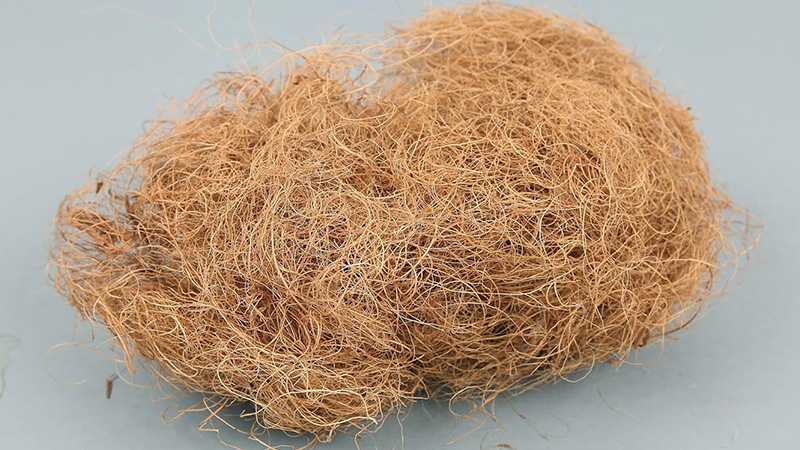
Coir is a natural fibre that is derived from the outer husk of coconuts. It is a strong, coarse fibre that is used in a wide variety of products. It has a range of uses, from floor mats and doormats to brushes and mattresses.
Coir can be found between the hard, internal shell and the outer coat of the coconut, and is composed of long, thin fibres that are intertwined together.
It is a sustainable and renewable material that is commonly used in many industries.
It is highly durable and resistant to water, mold and insects. In addition, it is also an excellent insulator of heat and sound, making it a great choice for use in home furnishings.
Coir is also becoming increasingly popular as a sustainable material for use in construction, due to its strength and versatility. It is environmentally friendly and can be used to create strong and long-lasting structures.
13. Carbon Fibers
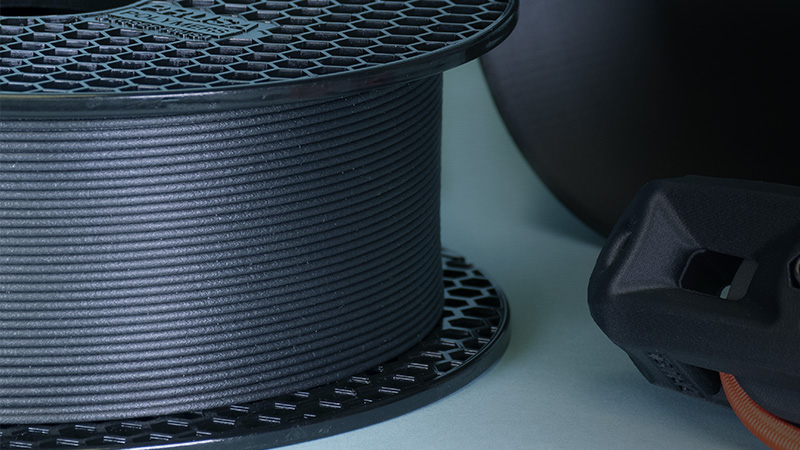
Carbon fibers are a type of fiber that is composed mainly of carbon atoms and is usually around 5 to 10 micrometers in diameter. Carbon fibers provide many advantages over traditional fibers, such as high stiffness, high tensile strength, and a high strength to weight ratio.
These fibers are also highly resistant to chemical damage, have a high temperature tolerance, and a low thermal expansion. This makes them a popular choice for many industrial applications, such as in the aerospace and automotive industries.
The high stiffness and tensile strength of carbon fibers make them a great choice for use in structures and components where strength is essential.
As these fibers are so lightweight, they are also often used in aircraft and spacecraft construction, as they provide superior strength while keeping the total weight low.
The high chemical resistance of carbon fibers also makes them ideal for use in protective clothing and equipment, as they are resistant to most chemicals and other corrosive materials.
The high temperature tolerance of carbon fibers is also an advantage, as they can withstand temperatures up to 1000°C without losing their structural integrity.
This makes them suitable for use in a variety of high-temperature applications, such as in engine exhaust systems and exhaust manifolds.
The low thermal expansion of these fibers also makes them a great choice for use in precision instruments and systems, as they remain stable even when exposed to extreme temperatures.
Overall, carbon fibers provide many advantages over traditional fibers, which makes them a popular choice for many industrial applications.
They are lightweight, strong, and resistant to most chemicals and extreme temperatures, making them an ideal option for many different types of projects.
14. Spandex
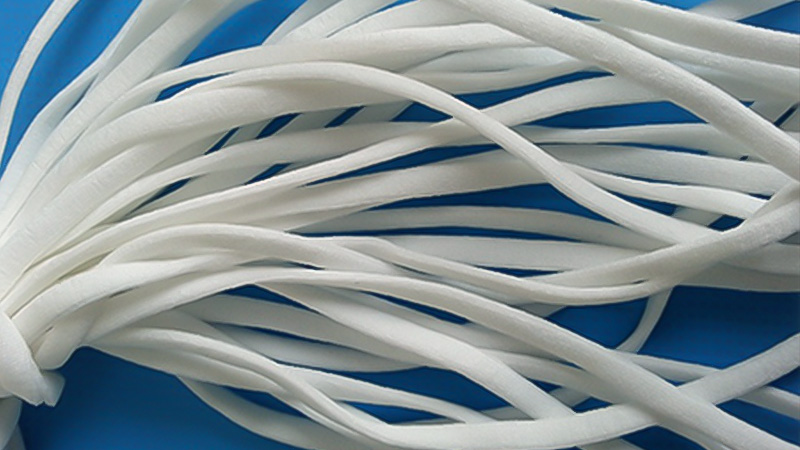
Spandex, Lycra, or elastane is a type of synthetic fiber with exceptional elasticity. Invented in 1958 by chemist Joseph Shivers at DuPont, it is a polyether-polyurea copolymer, meaning it is made up of two or more different types of materials.
The name “spandex” is an anagram of the word “expands,” and is the preferred name for this material in North America. Spandex is commonly used in clothing, including swimwear, sportswear, and underwear, to provide comfort and flexibility.
It is also used in medical braces and supports and in other industrial applications. Due to its elasticity, spandex can be stretched up to 500% of its original length, and still return to its original shape.
This makes it a popular choice for activewear.
In addition to its elasticity, spandex is also lightweight and strong, making it an ideal choice for many types of garments. It is also highly breathable and resistant to chemicals, mildew, and ultraviolet light.
Due to its many advantages, spandex has become a popular choice for a wide variety of garments and applications.
15. Sisal
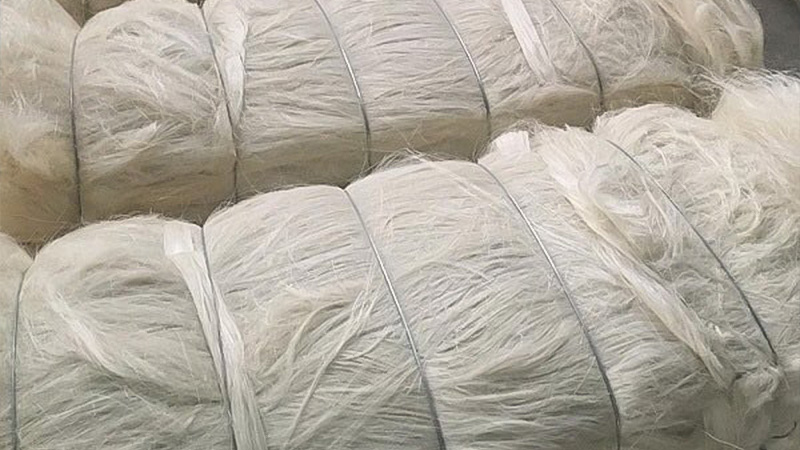
Sisal is a type of plant that originates from southern Mexico but has been grown in many other countries across the world. It is a flowering plant and is known for its stiff fiber which is commonly used to create rope and a variety of other products.
Its fibres are particularly strong and durable and are often used for various marine applications such as ship rigging. Additionally, sisal is also used to make sacks, carpets, mats, and even paper.
It is also used as an agricultural fiber for animal bedding, as well as for insulation and mulching. Its fibres are also used to make twine and string, which are often used in the construction of furniture, baskets, and other household items.
Overall, this versatile plant is an important resource for many different industries and applications. Kingdom Plantae Clade Monocots Order Asparagales Family Asparagaceae Genus Agave Species A. sisalana.
16. Glass Fiber
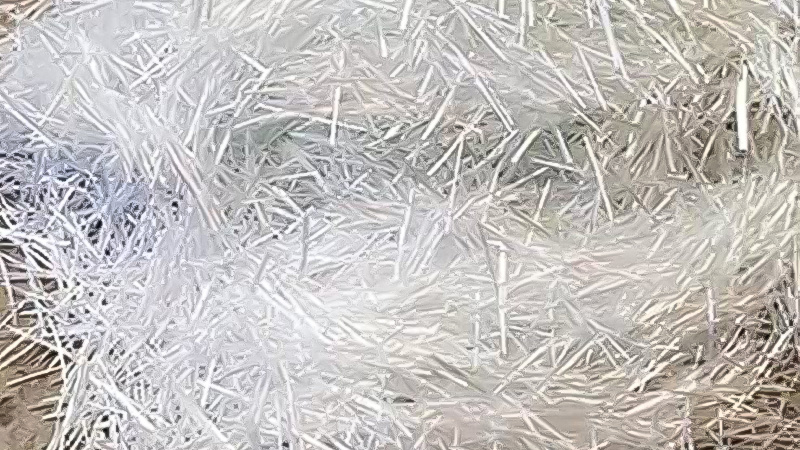
Glass fiber is a material made up of extremely thin strands of glass. It is an invention that has been used throughout history by glassmakers to make items with a unique texture and appearance.
However, it was not until the invention of finer machine tooling that mass production of glass fiber became possible. This allowed glassmakers to produce larger quantities of glass fiber with greater precision and uniformity.
Glass fiber is now used in many areas, such as insulation, automotive, aerospace, and construction. It is highly durable and resistant to extreme temperatures, chemicals, and electricity, making it an ideal material for a wide range of applications.
The production of glass fiber has also become much more efficient and cost-effective, thanks to improved machine tooling.
17. Linen
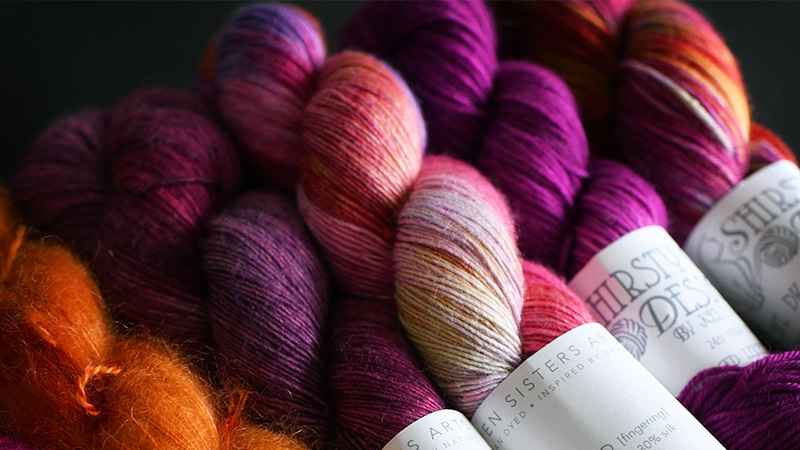
Linen is a fabric created from the fibers of the flax plant. It is valued for its strength and absorbency, as well as its ability to dry quickly. This makes it a great choice for hot weather, as it is comfortable to wear.
The flax plant fibers can be used to create linen yarn, as well as woven and knitted textiles. These textiles can be used to make a variety of garments, such as shirts, dresses, and other clothing items.
The absorbency of linen makes it ideal for clothing that needs to be breathable and lightweight, such as summer dresses and blouses.
Additionally, linen is a great choice for bedsheets and other bedding items because it is soft and comfortable to sleep on. The durability of linen also makes it a great option for upholstery and curtains, as it will last for years.
18. Bamboo

Bamboos are a very diverse group of plants within the grass family, Poaceae. They are mostly evergreen, meaning they stay green and don’t lose their leaves in the winter. Most bamboos are also perennial, meaning they live for more than two years.
As flowering plants, they produce flowers which are usually small and inconspicuous. Bamboos are divided into the subfamily Bambusoideae, which makes up the majority of the grass family.
This subfamily includes a wide variety of bamboo species, which can range from small, short-stemmed plants to tall, woody trees.
Bamboos are found all over the world and have been used for centuries for a variety of purposes, including construction, food, and medicine. Kingdom Plantae Clade BOP clade Order Poales Family Poaceae.
19. Aramid
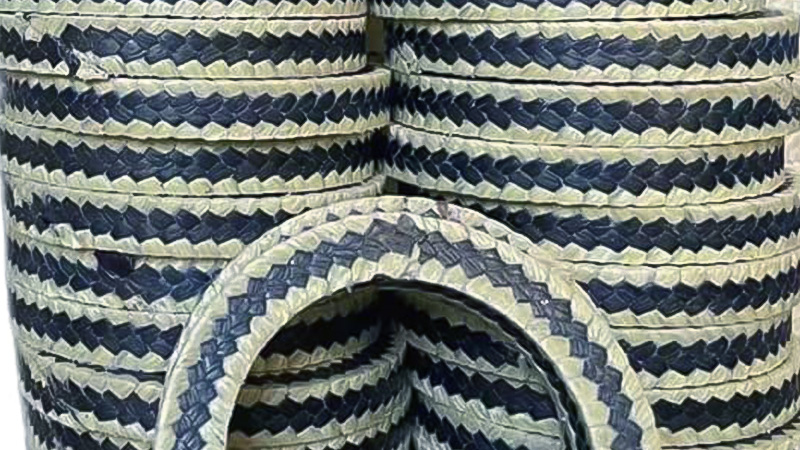
Aramid fibers are a type of synthetic fiber that is both heat-resistant and strong. Also known as aromatic polyamides, they are highly valued for their mechanical properties, as they are lightweight yet have high resistance to abrasion and are very durable.
Aramid fibers also have excellent chemical resistance and good electrical properties.
They are used in a variety of applications, such as protective clothing, aircraft parts, parachute cords, and brake linings. Aramid fibers are produced by spinning a liquid polymer solution into fibers, which are then cross-linked to form a strong, stable material.
The high strength and heat-resistant properties of aramid fibers make them ideal for many industrial applications.
They are sometimes blended with other fibers, such as carbon or glass, to increase their strength and durability. Aramid fibers are often used in highly demanding applications such as aerospace, automotive, and military applications.
They are also used in the production of bulletproof vests, firefighting suits, and other protective gear. The heat-resistant and strong properties of aramid fibers make them ideal for use in extreme conditions.
Overall, aramid fibers are a very versatile material with properties that make them suitable for a wide range of applications.
They are lightweight, strong, heat-resistant, and durable, and their chemical and electrical properties make them ideal for many industrial applications.
20. Lyocell
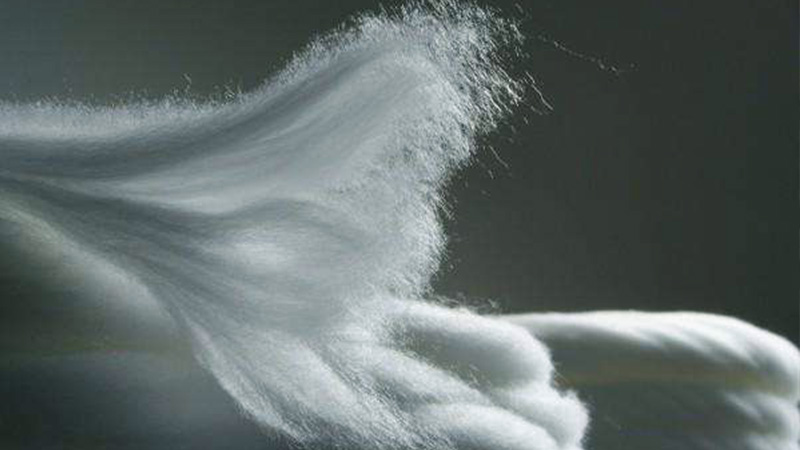
Lyocell is a semi-synthetic fiber used to create textiles for clothing, household items, and other uses. It is a form of regenerated cellulose, meaning it is derived from plants such as wood pulp. The process of creating lyocell involves dissolving wood pulp in a solvent.
This solution is then put through a dry jet-wet spinning process, which creates the fibers that make up the lyocell fabric. These fibers are then woven together to make textiles. Lyocell is a sustainable fiber that is both soft and strong, making it a popular choice for clothing.
It is also breathable and abrasion-resistant, so it is ideal for activewear. Additionally, lyocell is resistant to shrinking and fading, making it a good choice for delicate items.
It is also environmentally friendly, as the production process uses fewer chemicals than other fibers and the solvent used can be recycled. Overall, lyocell is a versatile, sustainable fiber that can be used to make a variety of items.
Its properties make it a great choice for clothing, household items, and other uses. The production process is efficient and environmentally friendly, making it an excellent option for those looking for a sustainable fabric option.
21. Animal Fiber
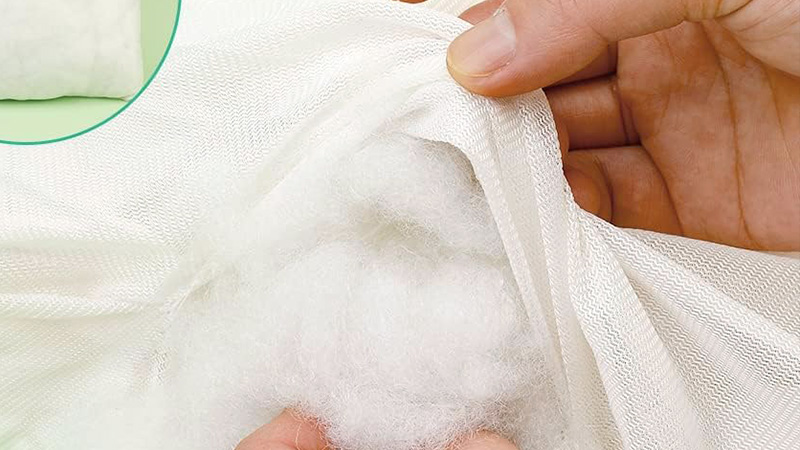
Animal fibers are a type of natural fiber that are made up of proteins. These fibers are often used in manufacturing and in hand spinning. The two most commonly used animal fibers are wool from domestic sheep and silk.
Wool is a type of hair that is soft and durable, making it ideal for making clothing, rugs, and other textiles. Silk is a material that is both lightweight and strong, making it perfect for creating fabrics with a luxurious feel.
Both wool and silk are popular choices for hand spinning, as they can easily be spun into yarn. Wool is often used to make sweaters, hats, and scarves, while silk can be used to create elegant garments and accessories.
Animal fibers have been used for centuries to create functional and fashionable clothing, and they remain a popular choice today.
22. Kevlar
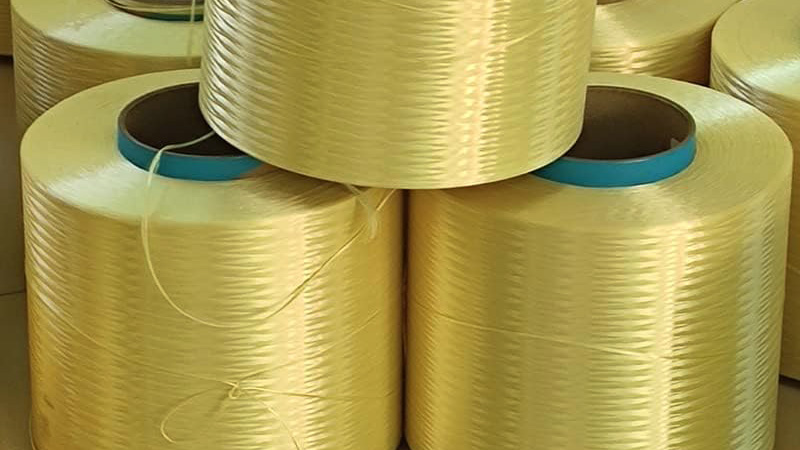
Kevlar is a synthetic fiber that was developed by Stephanie Kwolek at DuPont in 1965. It is a member of the aramid family, which includes other strong and heat-resistant materials such as Nomex and Technora.
Kevlar is used in a variety of products due to its strength and heat resistance. It was first commercially used in the early 1970s to replace steel in racing tires.
Kevlar is now used in many other applications, such as body armor, ropes, cables, and composites for reinforced structures. It is also used to create bullet-proof vests and helmets, to protect firefighters and police officers from harm.
Kevlar is a highly versatile material that has been proven to be an effective and reliable solution for many applications.
23. Acrylic
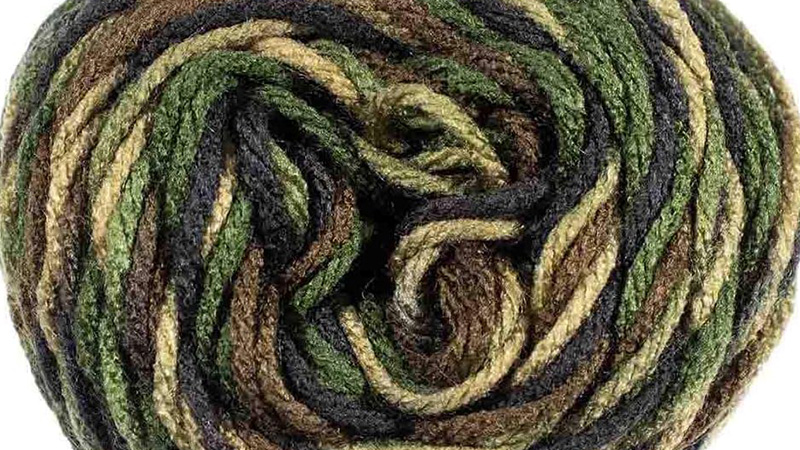
Acrylic fibers are a type of synthetic fiber, made from a polymer with an average molecular weight of 100,000, which is composed of around 1900 monomer units.
In order for a fiber to be labeled as ‘acrylic’ in the US, the polymer must contain at least 85% acrylonitrile monomer.
Other monomers, such as vinyl acetate or methyl acrylate, may also be present in the polymer. Acrylic fibers are known for their smooth feel, lightweight nature, and low cost.
They are used to make a wide variety of fabrics, including coats, sweaters, socks, blankets, and upholstery. They may also be found in items such as carpets, curtains, and rugs.
Acrylic fibers are highly durable and resistant to fading and shrinking, making them a popular choice for long-lasting apparel.
24. Cellulose
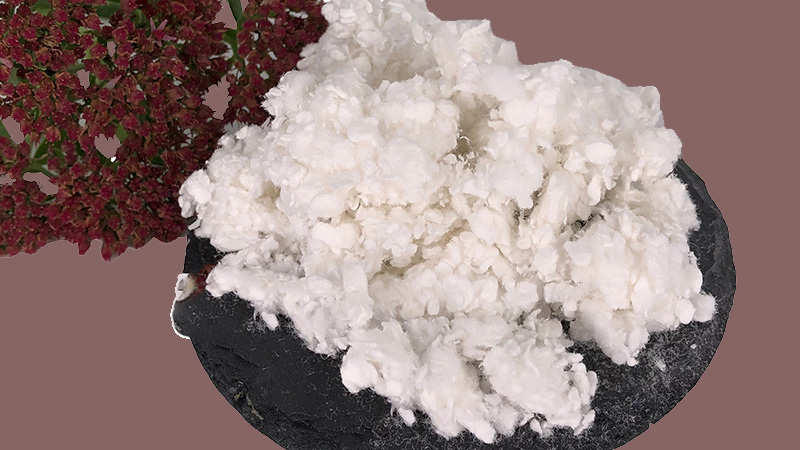
Cellulose is an organic compound made up of a number of glucose molecules linked together in a long chain. Its chemical formula is ₙ and it is a type of polysaccharide.
It is a vital component of the primary cell walls of green plants, various forms of algae, and oomycetes. Cellulose is composed of long chains of glucose molecules, known as beta-linked D-glucose units, that are connected together.
These chains can range from hundreds to thousands of glucose molecules in length. This long chain of glucose molecules provides structural support to the cell, helping to maintain its shape and form.
Cellulose is also an important component of the primary cell wall of green plants, as it forms a protective layer around the cell wall that helps it to retain its structure.
It also helps to regulate the flow of molecules in and out of the cell, as well as providing a physical barrier against environmental stresses.
In addition, cellulose helps to maintain the strength and rigidity of the cell wall, which enables plants to stand upright and resist external forces.
Algae and oomycetes, which are primitive aquatic organisms, also contain cellulose in their cell walls.
This helps them to stay afloat and gives them the ability to move around in their environment.
Cellulose is also important in the formation of the cell wall of many species of fungi. Cellulose is an essential component of the cell walls of plants, algae and oomycetes, and is essential for their survival and growth.
Without it, these organisms would not be able to survive in their environment or reproduce. Therefore, cellulose plays a critical role in the health and stability of our planet’s ecosystems.
Conclusion
Fibers are the unsung heroes of our daily lives, quietly woven into the fabric of countless products we depend on. Whether it’s the comfort of cotton in our clothing, the strength of nylon in our ropes, or the insulation of fiberglass in our homes, fibers play a crucial role.
Understanding the unique properties of various fiber types empowers us to make informed choices when selecting materials for specific purposes. From natural fibers like cotton and wool to synthetic counterparts such as polyester and nylon, each offers a distinct set of advantages.
By harnessing this knowledge, we can optimize our choices, ensuring that our clothing, carpets, paper, and insulation serve us effectively and sustainably, meeting our diverse needs while contributing to a more resilient and resource-conscious future.
Leave a Reply